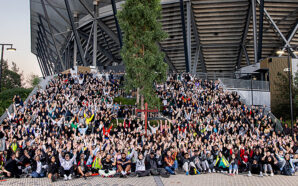St Catherine of Siena is famously quoted as saying: ‘Be who you were created to be, and you will set the world on fire.’ Born in 1347, she no doubt was asked to cook, clean and perhaps ironed more than one altar cloth. She also told the Pope of the time to ‘man up’ and get himself back to Rome and stand up to his Cardinals. She set the world on fire, even as an illiterate woman who had to dictate her writings to others. She was the first female doctor of the Church.
That was then. This is now. At the end of last year, the Jesuit-run America magazine completed a survey on what it means to be a Catholic woman (in the US).
Almost 20 years ago, the largest research project ever undertaken by the Australian Catholic Bishops Conference (ACBC) was Woman and Man: One in Christ Jesus. It’s a heavy tome, about the size of a bible. Its findings (and those of the America survey) show that women’s participation is not only crucial to the survival of the Church, but that in many places, they are holding it together in unheralded ways.
According to the most recent National Church Life Survey, women make up more than 66 per cent of Catholics in this country. So, what does it mean then to be a woman in this Church? The answers are as varied as the women themselves and are often contradictory. While we are all created in the image and likeness of God, we are all wired differently, and we think, feel and experience in unique ways.
Some women in the Church that I’ve spoken to feel overworked and underpaid. Some are content with their various ministries and involvement. Some seek to be better included in councils and decision-making bodies, while others feel called to ministries that are off-limits to them. Rather than dwelling on some ministries which are closed to women, it is perhaps more productive to focus on the possible.
Recently, I shared an article on my Facebook page about allowing women to be cardinals of the Catholic Church. Technically, there is no impediment to women being named cardinals, as the office of cardinal does not require ordination. It’s never been done in practice, but it’s worth thinking about. The reaction was predictably varied and reminded me of a conversation I’d had with an Australian nun in 2005 who has spent over 30 years working in Asia. She recounted to me the story of being sent a questionnaire by the apostolic nuncio about possible names for a new bishop. Instead of recommending the foreign missionary priests she associated with, she went straight to the name of a fellow religious sister who was a native to the country.
“Why don’t you just get Sister So and So and make her a cardinal, since she can’t be a bishop?”, she wrote, reasonably sure that she would be blacklisted from then on. The nunciature never again sought the counsel of that particular sister.
It can be tricky. In theory, women can do anything in the Church, apart from being ordained to the priesthood. Then again, most male Catholics aren’t priests, so therefore, few Catholics would say their deepest meaning is in living out a priestly vocation. However, this does lead to exclusion in other, seemingly unrelated areas, of which we need to be aware.
In the early 1900s, women were not allowed to sing in Church choirs. Now, some of our most prolific liturgical composers are women. When I received my first communion, our parish priest said no to female altar servers, despite other parishes in the archdiocese being open to the possibility. Now, they are a common sight across the world, although this practice is not universally accepted.
My mother finds meaning in her faith as she plays tambourine in the Saturday night folk choir, as does my housemate who is doing a PhD in bioethics. I work in a Catholic school with a leadership team made up of six women, including the principal, and just one man. My friend Maria is the president of a local St Vincent de Paul conference and lives her faith out in action, while another directs a diocesan communications office.
We are teachers, lawyers, agency heads, psychologists, doctors, stay-at-home mums. We are pastoral associates, prophets and even princesses – claimed one friend. She was initially being flippant, but as one theologically trained, she started wondering about the fact that if men could be cardinals, and thus ‘princes’ of the Church, maybe women could be princesses? This woman was known to an Australian cardinal, and when he saw her at a meeting, he smiled at her and, as they greeted one another, he quipped: ‘Hello, Princess’. Word gets around.
So, all of that said, rather than making any conclusions about what it means to be a woman in the Church, perhaps more productive is to look at how we each as individuals can discern our vocations and support the women around us, particularly those who have lived through frustration and alienation and have despaired that the Church will ever change.
Indeed, St Teresa of Avila is quoted as saying: “Being a woman is enough to make my wings fall off.” Despite this, she spread her wings and reformed the Carmelites, so imagine what we can do, despite adversity, 500 years on.
Beth Doherty is a former editor at Jesuit Communications. She is currently working as a journalist and teacher in Canberra. She is the author of two books and a liturgical musician. Her books and albums can be purchased at ijoyfullysing.com
With thanks to Madonna magazine where this article first appeared.








